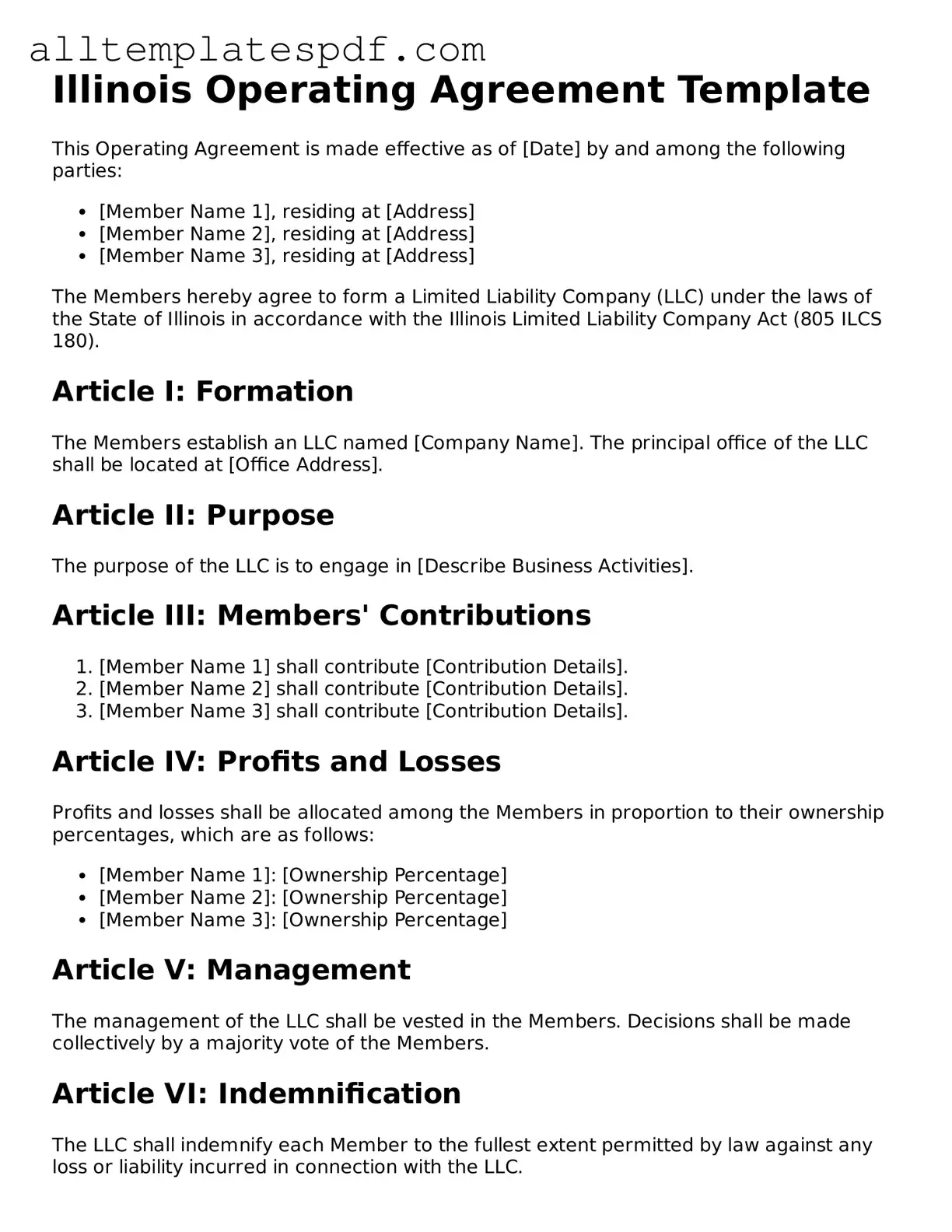Filling out the Illinois Operating Agreement form can be a straightforward process, but many individuals make common mistakes that can lead to complications down the line. One frequent error is failing to include all members' names. Each member's full legal name should be clearly stated in the document. Omitting even one member can create confusion and potential disputes in the future.
Another common mistake is neglecting to specify the percentage of ownership for each member. It is essential to clearly outline how ownership is divided among members. This detail helps prevent misunderstandings and ensures that everyone is on the same page regarding their stakes in the business.
People often overlook the importance of detailing the management structure of the LLC. Whether the members will manage the business themselves or appoint managers, this information must be clearly articulated. A lack of clarity in management roles can lead to operational inefficiencies and conflict among members.
Additionally, many individuals fail to address the procedures for adding or removing members. It is crucial to outline how new members can be admitted and under what circumstances existing members can exit the agreement. Without these provisions, the process may become contentious and legally complex.
Another mistake involves the failure to include a dispute resolution clause. Disagreements among members are inevitable in any business. Having a clear process for resolving disputes can save time and money in the long run. This clause can specify mediation or arbitration as preferred methods for resolving conflicts.
Some individuals also neglect to review and update the Operating Agreement regularly. As businesses evolve, so too should their agreements. Regular reviews ensure that the document remains relevant and accurately reflects the current state of the business and its members.
Finally, many people do not seek legal advice when completing the form. While it may seem like a simple task, consulting with a legal professional can help identify potential pitfalls and ensure compliance with state laws. This step can provide peace of mind and protect the interests of all members involved.
